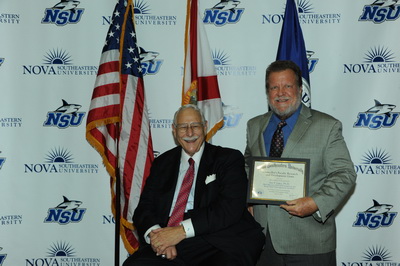High Efficiency (454) DNA Sequencing of a Sponge Meta-Transcriptome for Symbiosis
Grant Winners
- Jose Lopez, PhD
- Emily Schmitt, PhD
Deans
- Richard Dodge, Ph.D.
- Don Rosenblum Ph.D.
Abstract

A new animal model system for symbiosis is needed to help guide expanding biological and biomedical research and also provide a comparative framework for accelerating human-related symbioses (microbiome) studies. We intend to develop the marine sponge (Phylum Porifera) as a new symbiosis model, because of the following relevant features: sponges host a diverse and unique microbial flora of bacteria, fungi and protozoans, that can sometimes comprise over 50% of the host's body mass. These symbionts have coexisted and likely coevolved with the ancient sponge host for over 500 million years, and have complex interactions within their "communities" that can sometimes result in the production of unique, bioactive natural compounds with therapeutic potential. Yet, currently over 90% of microbes in natural habitats, including within sponge tissue, cannot be cultured. To address this research gap, molecular genetics technology must be applied for a comprehensive understanding of complex symbiont interactions within the sponge host. To accomplish this, we will use the latest high efficiency DNA sequencing technology (called "454 pyrosequencing") combined with intensive computational biology methods ("bioinformatics" or "genomics") to characterize the expression of comprehensive genetic instructions (mRNA "meta-transcriptomes") within the total sponge system stemming from both the sponge host and its symbiotic microbial community. Local sponge species will provide material for RNA extraction and sequence analysis. The primary hypothesis of this study will be that symbiotic (genetic, protein) signals that drive vital physiological and ecological interactions among microbes and their eukaryotic sponge host can be best determined by sequencing mRNA messages (the transcriptome). Data will provide the first large scale characterization of a sponge-microbe transcriptome and potentially yield up to 500 million bp of data. Successful completion of the project's specific aims will have potential positive significance for various fields including microbiology, genomics, microbial ecology, taxonomy, natural products and evolutionary biology.